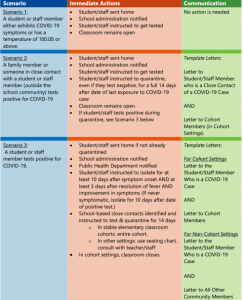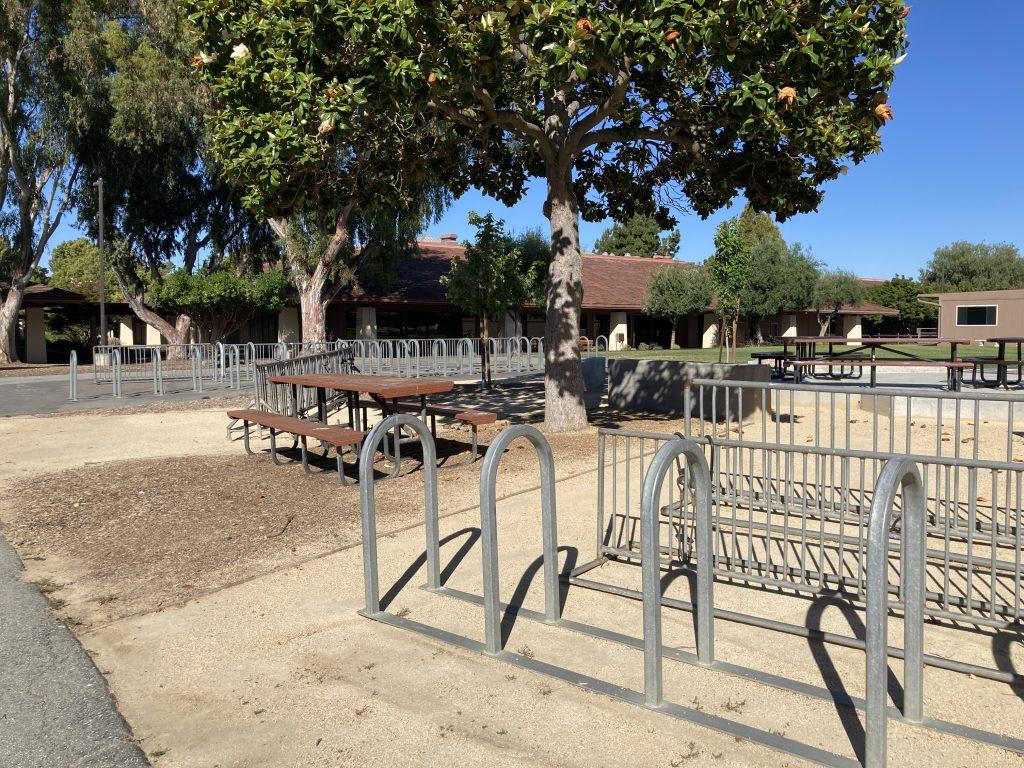Over 1,000 people tuned into the Palo Alto Unified School District school board meeting last night to hear the discussion on whether to authorize a plan to have students return to school, starting with the youngest students in October and culminating in secondary students in January.
The board plans to vote on the proposal during a special session next week.
Superintendent Don Austin began the discussion by suggesting that although there is disagreement within the community on when and how to return to school, all opinions are valued and are being taken into account.
“I hope, if nothing else, you can feel heard about the work that’s gone into the preparation of bringing students back in person,” Austin said. “That does not mean every employee or every parent or anybody is going to get exactly what they want or everything they want.”
Approximately 60 teachers called into the meeting, with the majority voicing their concerns on returning to in-person school and requesting to continue distance learning. According to Austin, in a survey sent out to PAUSD parents last week, the majority of parents in the district indicated they want schools to start up in person sooner rather than later.
Teri Baldwin, President of the Palo Alto Educators Association, voiced one of many concerns expressed by teachers at the meeting.
“Many specialized teachers do not know who they will be teaching and they’re supposed to start in less than a week,” Baldwin said. “Please let’s follow our counterparts in San Jose Unified and Milpitas Unified and stay closed.”
Austin and the other PAUSD staff members who created the proposed plan to return to school acknowledged the concerns community members have. In the meeting, multiple presentations detailed when and how students would return to school, what precautions would be taken, and their rationale behind these decisions.
“We’ve tried to create a system that can provide opportunities that are defensible, and we feel good about either avenue, whether you return in person or you go fully distance learning,” Austin said. “Tonight is more than a presentation trying to persuade people to come back.”
Additionally, Austin reminded viewers that although the majority of PAUSD community members are fortunate enough to have safe households from which they can engage with distance learning, there are students who are not as fortunate.
“It is unimaginable what’s happening in some homes right now with people that are food- challenged, dealing with abuse, dealing with other things that we just don’t know about because we can’t see those kids every day,” Austin said. “I just want to keep that as a central thought as we go through and acknowledge that there is certainly room for differences of opinion on how and when and everything else related to our reopening plan.”
Hybrid learning schedule
In the proposed plan, starting on Oct. 12, preschoolers through first graders will start returning to school; second and third graders will follow on Oct. 26; and fourth and fifth graders on Nov. 9. Special education students have already begun returning to school, and secondary schools will return in January.
When the primary school students return, they will be in either cohort A or B. Cohort A will attend school Monday and Tuesday, cohort B will attend schools Thursday and Friday, and Wednesdays will alternate between the two cohorts. On the days students are not in school, at-home instruction will occur asynchronously for the majority of the day, with daily synchronous sessions.
The kindergarten schedule also includes cohort division, except students will attend in-person school everyday in either the morning or afternoon session.
Last night’s meeting agenda also mentions the possibility of certain pre-approved activities to return to school in small cohorts. These activities include music, visual arts, sports, athletic conditioning, journalism, yearbook, ASB and leadership groups.
Does everyone have to come on campus for hybrid learning?
Depending on a student’s grade level, the options for distance learning vary.
For elementary school, students are given the option to choose distance learning for the remainder of the school year. If a student chooses to participate in distance learning, they are put in a virtual classroom with other students from across the district and are no longer enrolled in their neighborhood school, and therefore cannot return for the remainder of the year.
Secondary school students will only be allowed to continue in distance learning if they or a family member have a medical condition documented by a doctor’s note. Students participating in distance learning will use a version of the Home Hospital Program. PAUSD will provide more information on the program when options are further evaluated.
Currently, there are a wide variety of opinions as to how the rest of the school year should work. Many teachers are opposing the proposed plan to return to school this fall, but Austin is trying to work with the teachers to come to an agreement.
“We have to remember who we serve first, and school systems are designed and created to serve students,” Austin said. “And we need to work through the adult issues to make that work into function.”
Health and safety precautions
The Roadmap to Return to Campus document explains the many health and safety precautions schools will be taking, and what would happen if there is a spike in cases in the county or a confirmed case within the district. These safety precautions include ensuring all personal protective equipment is being worn properly, providing free hand sanitizer, and frequent cleaning and disinfecting.
With many parents and teachers concerned about testing, Director of Student Services Yolanda Conaway gave a presentation on the testing options available. Currently, universal testing is not recommended by the CDC or the County, and PAUSD is taking this into account, but is still exploring all of the available options.
“Our view is that a robust screening or surveillance testing regimen is within our reach both financially and logistically and can be implemented in a matter of weeks, should we decide to go in that direction,” Conaway said. “However, the testing should not be viewed as a prerequisite for executing the plan we’ve put together since we’ve already been off of the list, out of purple and into red [tiers] and ready to return with what I believe is a robust plan.”

RELATED STORIES
Distance learning:Continued education during a pandemic
Finding control the chaos: How I grounded myself during a pandemic
Candlelight vigil for Ruth Bader Ginsburg held at Palo Alto courthouse





